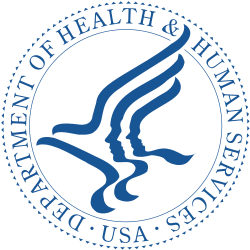History
Human experimentation prior to the OHRP
Unethical human experimentation in the United States has been practiced in the United States for a long time prior to creation of the OHRP.[ citation needed ] A major characteristic of experimentation done during this time was the disregard for suffering inflicted on patients. In the 1840s, J. Marion Sims performed hundreds of surgical operations on enslaved African women without using anesthesia. [4] Robert Bartholow applied electric currents into the exposed brain matter of patients. One egregious example was in 1874 when a lady came in for treatment of a cancerous ulcer on her skull that made a 2-inch hole. Bartholow inserted electrodes into her brain and caused her great distress. The lady went into a coma and died 4 days later. [5] Another theme of human experimentation in the 19th and early 20th century was the unjust treatment of ethnic minority patients. At the turn of the 20th century, US Army doctors infected 34 Filipino prisoners with bubonic plague and beriberi. [6] Between 1932 and 1972, the Tuskegee syphilis experiment observed the natural progression of syphilis in 600 African American males (399 of which had syphilis and 201 control subjects who did not have syphilis). In exchange for their participation, the men were promised free medical exams, hot meals and a burial fund. The men were never told that they had syphilis nor were they provided treatment when penicillin became available as an effective cure in 1947. By the end of the study in 1972, only 74 of the test subjects were alive. Of the original 399 men with syphilis, 28 had died of the disease, 100 had died of syphilis-related complications. Additionally, 40 wives had been infected and 19 children had been born with congenital syphilis. A common misconception of the Tuskegee Syphilis Experiment is that subjects were injected with syphilis. [7]

Notable precursory research ethics entities
Before the founding of the OHRP, the United States went through several precursory entities whose goals were to handle ethics in human experimentation. Many were transitory committees that lasted no more than a year or two, such as the Advisory Committee on Human Radiation Experiments and the Ethics Advisory Board. [8] One of the early and longstanding groups concerned with experimental subject safety was the American Psychological Association (APA), who first published their "Ethical standards of psychologists" in 1953. [9] The APA has since published many versions of their Ethics Code and currently operate under the code passed in 2002 [9] The National Research Act then established the National Commission for the Protection of Human Subjects of Biomedical and Behavioral Research, which was the first national commission whose entire focus was the protection of experimental subjects. [10] [11] In 1978, the Food and Drug Administration added their first regulations protecting human research subjects, which were revised in 1981. [12] The National Bioethics Advisory Commission was signed into existence by President Bill Clinton in October 1995 and was terminated in October 2001. [10]

Founding
On June 13, 2000, the United States Secretary of Health and Human Services, Donna Shalala, created the OHRP as a component of the Office of Public Health and Science, with the main function of overseeing research done on human test subjects and ensuring its compliance with regulations set forth by the United States Department of Health and Human Services. [13] The OHRP replaced the Office for Protection from Research Risks, and Greg Koski was named as the first director. [14] The director of the OHRP was to report to the United States Assistant Secretary for Health under the Department of Health and Human Services (then David Satcher).
Case involvement
Since its founding, the OHRP has interfered in several cases involving human subject research experiments in which violations were made to the health and rights of the participants, as well as the regulations put in place for human research. In 2001, the OHRP temporarily suspended the research license of Johns Hopkins University and its associated research facilities following the death of a participant in a hexamethonium inhalation experiment. [15] The experiment was found to be violating regulations in that the researchers failed to inform the participants of the possible dangers of hexamethonium as well as obtain proper information on the effect of hexamethonium prior to experimentation. [15] In another case that occurred in 2013, the OHRP challenged the practice of the Surfactant, Positive Pressure, and Oxygenation Randomized Trial (SUPPORT), a research project in which 1300 premature infants were used as subjects to test the optimum levels of oxygenation to be used for proper care of premature infants in hospitals. [16] This experiment was determined to be in violation of federal regulations in that the parents of these infants were not informed of the possible effects of the experiment on their child, which included blindness or death, and were therefore unable to give informed consent. [16]

